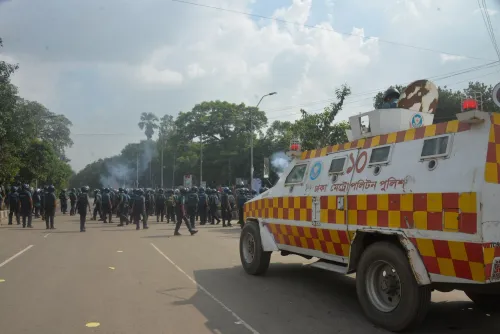How Many Lives Were Lost in Nepal's Monsoon Disasters This Year?

Synopsis
Key Takeaways
- 140 fatalities reported due to rain-induced disasters.
- 1,454 disaster incidents recorded during monsoon.
- 67 deaths from landslides, followed by 37 from floods.
- 5,995 families affected by various disasters.
- Infrastructure damage impacting 18 hydropower projects.
Kathmandu, Nov 11 (NationPress) This year, rain-induced disasters across Nepal have tragically claimed the lives of 140 individuals during a monsoon season that lasted a total of 135 days, according to a report released by a government agency on Tuesday.
Throughout 1,454 disaster incidents, 30 people remain unaccounted for, while 300 individuals suffered injuries, as reported by the National Disaster Risk Reduction and Management Authority.
The report highlights that landslides were responsible for the highest fatalities, totaling 67 deaths, followed by flood-related incidents with 37 deaths, and lightning strikes causing 29 fatalities, as per the Xinhua news agency. In total, 5,995 families were affected by various disasters throughout the monsoon period from May 29 to October 10.
In addition, the authority reported that 120 more people died, and 622 others sustained injuries due to various other disasters, including fires and snakebites, during this timeframe.
Incredibly, 52 individuals lost their lives to natural disasters in just a three-day span in October, amidst continuous rain, as cited in an IANS report.
Beyond the human toll, Nepal has faced significant infrastructure damage due to landslides and floods nationwide.
The Independent Power Producers' Association of Nepal (IPPAN), representing private-sector power developers, reported that 18 hydropower projects—comprising 13 operational and 5 under construction—were impacted, hindering power generation.
This nation, rich in hydropower potential, is increasingly vulnerable to risks posed by climate change and related disasters.
According to the Ministry of Energy, Water Resources and Irrigation, the recent incessant rainfall led to riverbank erosion, flooding, and inundation in numerous areas, eroding nearly 1,500 metres of embankments along riverbanks and resulting in an estimated preliminary loss of about Rs 100 million.
Additionally, several irrigation projects were reported inundated due to flooding, as noted by the Ministry.









